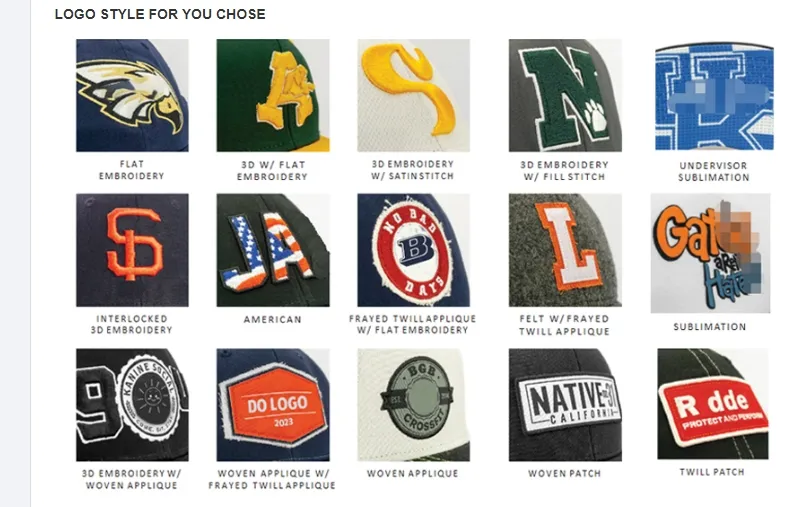If you love fashion, starting a hat business could be a terrific way to turn your creativity and skills into a profitable side venture.
You can produce bespoke hats that match specific market demands by working with the proper wholesalers.
Hats, unlike other fashion accessories, are important items that may be sold to a variety of niche markets, ranging from sports fans to outdoor enthusiasts.
In this tutorial, we’ll show you how to establish a bespoke hat business and explain why it’s a good idea.
Why Should You Consider Starting a Hat Business?
There are multiple excellent online business opportunities. Consider creating an online bespoke hat shop if you’ve been secretly considering starting a fashion brand.
Platforms such as Shopify, Etsy, and eBay make it simple to set up a store where customers may buy your products. Even if you aren’t a natural designer, you can work with designers like The/Studio to get feedback or have them create it for you.
So why a custom hat business?
Hats are an essential wardrobe item that allows you to cater to a wide range of specialized markets. You can focus on sports caps, vintage-style hats, beanies, sun hats, and other items.
You may produce original high-quality products with online manufacturers like The/Studio rather than inexpensive things that quickly overwhelm the market.
You can also develop a comfortable lifestyle business, just like any other e-commerce firm. Once all of the marketing systems and fulfillment processes are in place, you can earn money rather passively.
If you love fashion, starting a personalized hat business could be a no-brainer!
Hats are a foundational wardrobe piece allowing you to cater to many niche markets. You can specialize in sports caps, vintage-style hats, beanies, sun hats, and more.
With online manufacturers like The/Studio, you can create original high-quality products rather than cheap products that quickly saturate the market.
And like any other e-commerce business, you get to create a comfortable lifestyle business. You put work upfront and earn money somewhat passively once all the marketing systems and fulfillment processes are implemented.
If you’re passionate about fashion, starting a custom hat business might be a no-brainer!
How to Start a Custom Hat Business in 10 Easy Steps?
1.Research the hat market
While you may already have a concept of what you want to sell in your brain, don’t dive in just yet.
Consider this: you’ve spent hours researching how to launch a fashion brand and have placed a large order of personalized hats.
You begin paying advertising dollars to increase traffic to your online store on opening day, only to hear crickets.
so you must research the hat market that can ensures you sell products that people want to buy.
There are there forms of market research:
- Primary research is data that you collect yourself.
- Secondary research is data obtained from people who have already conducted research.
The idea is to identify the audience and types of hats or patterns that sell well in the market that you can customize. Here are some ideas for conducting market research:
- Investigate Google Trends to see what is gaining popularity.
- Use Facebook Analytics to learn about the habits, interests, and likes of potential customers.
- Conduct competition research on other online hat brands to determine what consumers recommend and don’t buy. Check Etsy and eBay reviews and the amount of recently sold items, for example, to determine their desirability. Examine critical remarks in order to intervene with a better solution to their difficulties!
2.Pick Your Niche
The most successful e-commerce enterprises identify a market problem and create a product to solve it.
Consider a market segment that hasn’t been filled or is severely neglected.
The simplest way to find a niche is to choose a market that you are already familiar with. Here are some specialty criteria to help you brainstorm ideas:
- Age, gender, and geographic location are all demographics.
- Hobbies or lifestyle: Examples include sportswear and stylish headgear with meme patterns.
- Hats in vintage or boho styles, for example.
- Hats in petite or larger sizes
- Handmade products or organic cotton caps are valued.
3. Pick the Style of Hats You Want to Sell
Hats have established themselves as useful and timeless accessories. The key is to choose which hat styles to sell.
Begin by thinking about your customers. Dad hats, snapbacks, sunhats, and bucket hats are popular with the ordinary fashion-conscious customer.
Here are several hat styles to think about:
- Snapback hats: Snapback hats are characterized by a flat brim and five sections. Unlike the curled brim of a baseball hat, the flat brim creates a sporty design that is ideal for casual everyday use and sports lovers.
- Baseball caps: These hats exist in a variety of shapes, but they are typically soft hats with a stiff bill extending in front and a rounded crown. They’re ideal for fans of sports and fashion streetwear.
- Trucker hats:Trucker hats are basecamp caps that include an adjustable visor and mesh backing. These hats are best suited to casual outdoor enthusiasts like hikers and beachgoers.
- Dad hats: These unstructured 6-panel baseball caps have basic branding and an unstructured front panel. Many merchants enjoy putting basic logos or funny designs on dad hats.
- 5-panel hats: Five-panel hats have two long panels at the top, one wide panel in the front, and two panels on each side. They’ve gained popularity in skateboard culture as part of their attire and help to protect eyes from the sun.

4. Design the Hats Yourself
Your designs have the power to make or kill your company in the cutthroat hat industry. We don’t advise developing it yourself unless you’re a graphic designer with experience using graphic design software and making mockups.
The online market is where designers can be found, but it takes a lot of research and trial-and-error.
The best choice is to hire skilled in-house designers who specialize in custom hats from a reputable print-on-demand company like doral capprints
To that end, if you choose to create the hat designs yourself, be sure you submit them in the correct size, format, color profile, and resolution.
5. Select the Printing Method
The most popular option is screen printing, which uses a stencil and screen to transfer ink to the hat’s surface. It guarantees vivid and durable prints while being reasonably priced.
For smaller orders, alternative techniques like heat transfer or embroidery are more practical choices.
By manually or mechanically stitching the logos, embroidery creates a textured appearance. When you print the design onto transfer paper and use a heat press to imprint it onto the hat, you are using heat transfer.

6. Choose the Right Manufacturer to Produce the Custom Hats
You are in the print-on-demand business model if you start a bespoke hat business.
You are in charge of picking the goods, coming up with the design, and advertising those products. Your products will be printed and delivered to you by a third-party supplier so that they are prepared for distribution.
To make sure vendors meet your company’s demands when you analyze them, you should establish a list of requirements, such as:
- Product offerings: Each company offers a variety of product categories. Check their product offering to make sure they have the caps you wish to sell.
- Customizability: Different providers offer different levels of customisation. You can select the hat styles, materials, colors, profile and bill forms, embroideries, and other elements at doral capprints
- Production and shipping times: Consumers will buy elsewhere if they believe that the production and shipping periods are excessively long. 90% of US customers anticipate 5 to 7 days for delivery. Check out their shipping schedules so you can swiftly replenish stock when necessary.
- Product quality: Request free samples or a minimum order from your supplier to evaluate the product. Low-quality products might increase your return rates and generate negative reviews, which will ultimately hurt your sales.
7. Build Your Clothing Brand
It’s time to build a brand that consumers will support.
This entails creating artistic components such as your logo, brand name, graphics, and color scheme.
Make brand guidelines to explain to your audiences who you are and what you stand for.
Develop your brand stance as well, making sure to include your distinctive value proposition.
In order for your clients to identify with your business, your brand needs to be memorable and emotionally engaging.
8. Pick Your Price Points
Without a doubt, setting the right pricing points will increase your conversion rates. Pricing your hats too expensive or too low can drive away your target market and waste money.
Knowing your entire cost after all expenses, such as the cost of goods, marketing, shipping, and fees, is the foundation of cost-based pricing techniques. You might want to charge at least $30 if it takes $15 to make the hat, sell it, and transport it.
You may use competition-based pricing if you are in a saturated market. In order to pounce and steal customers from rivals, you should charge a little less than the going rate in this situation.
Trial and error are necessary because there is no precise science to flawless pricing. You’ll eventually discover the sweet spot to aid in maximizing revenues.
9. Establish Your Marketing Channel
A bootstrap entrepreneur must assume a variety of roles.
You’ll need to stick to your budget and select the marketing avenues that are best suited to your goals and skill sets.
The following websites allow you to sell your unique hats:
The largest marketplace for retro, homemade, and customized goods is Etsy. You are able to list things with them, and they just charge a little price every listing.
You may build your own online store with Shopify. You have complete freedom to choose your store’s layout and establish your own rules. However, it is your duty to promote your store and draw customers in.
The e-commerce behemoth Amazon has a division called Amazon Handmade that sells handmade goods and artisan meals to customers.
eBay offers virtually everything for sale, but it is popular with hobbyists who purchase collectibles.
10. Fulfill Orders
Your customer service procedures will reduce refunds and encourage repeat business. According to research, increasing client retention by 5% boosts earnings from 25% to 95%.
With excellent organization comes customer satisfaction. Cancelling orders and informing clients that you are out of stock is the last thing you want to do.
After placing a purchase, make sure to immediately develop and print shipping labels. Once orders are sent, you need software that notifies customers automatically so they can manually track their goods.


